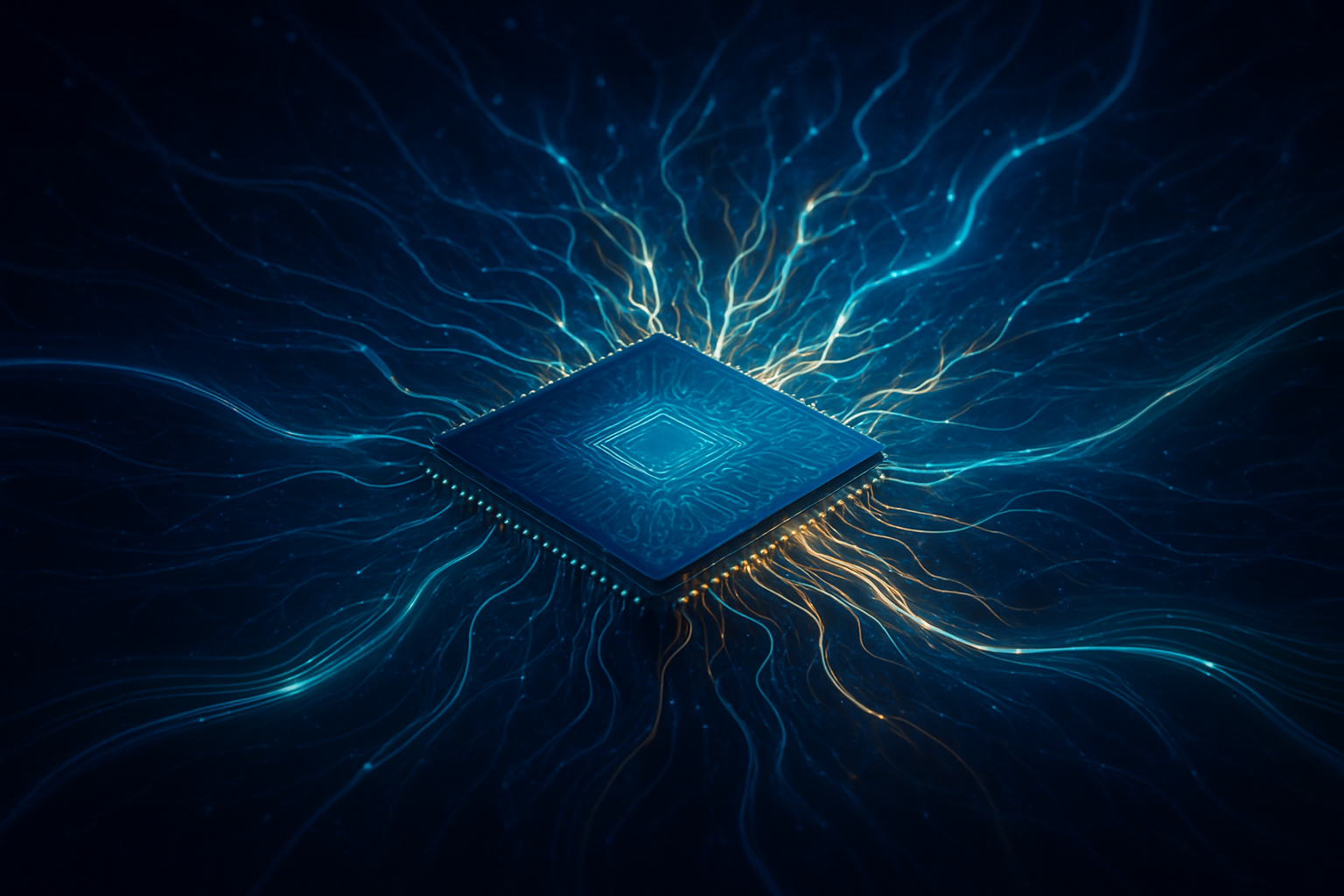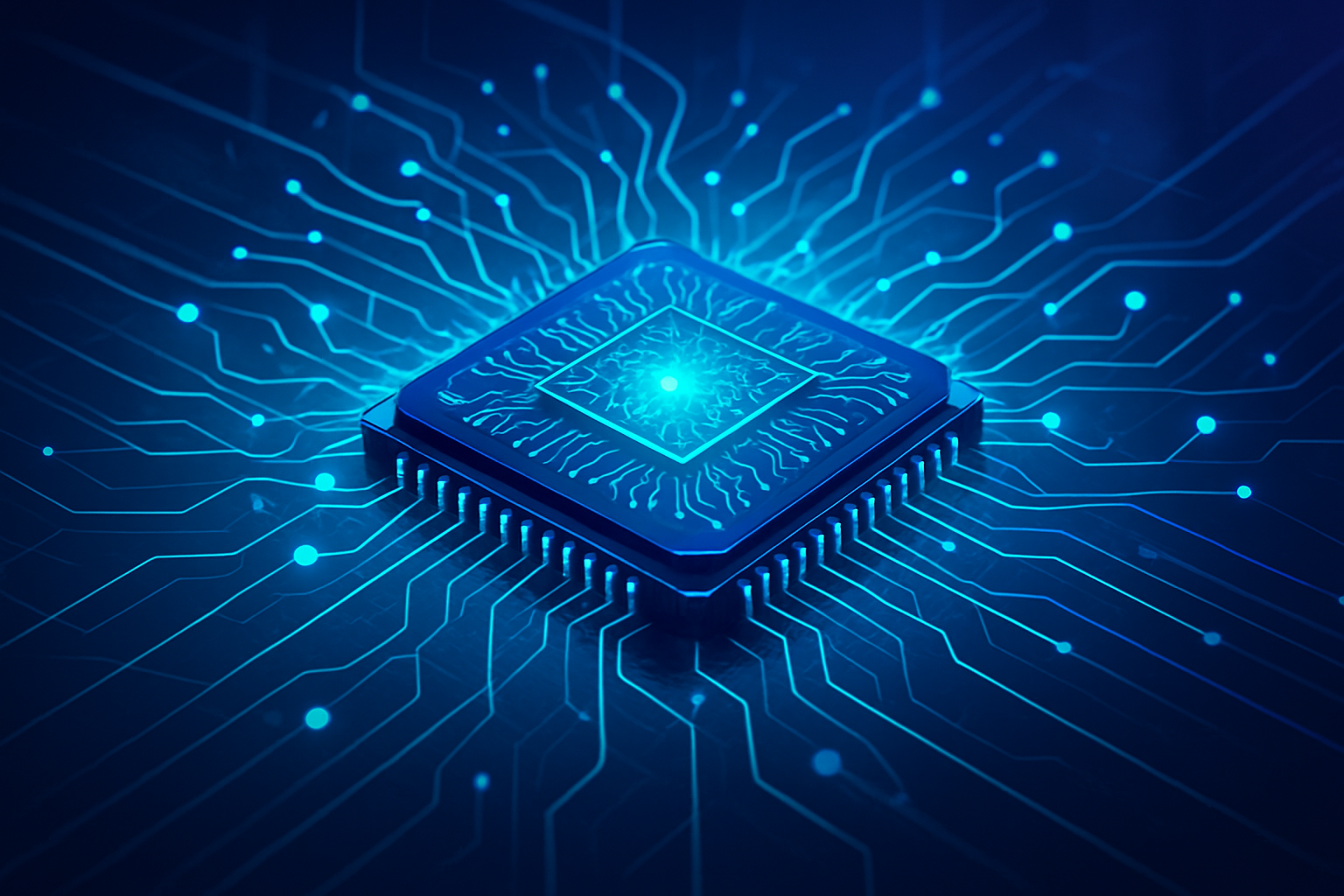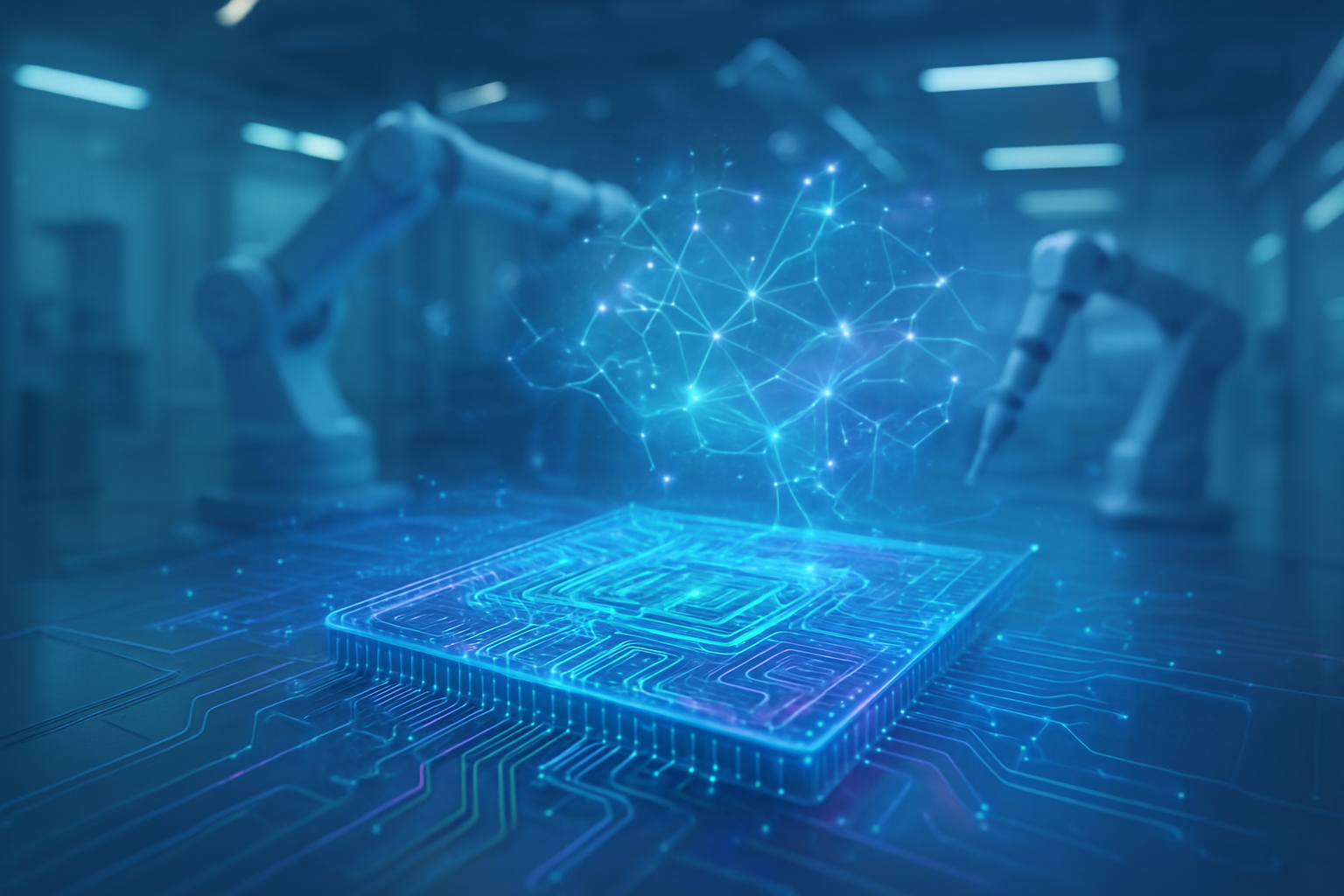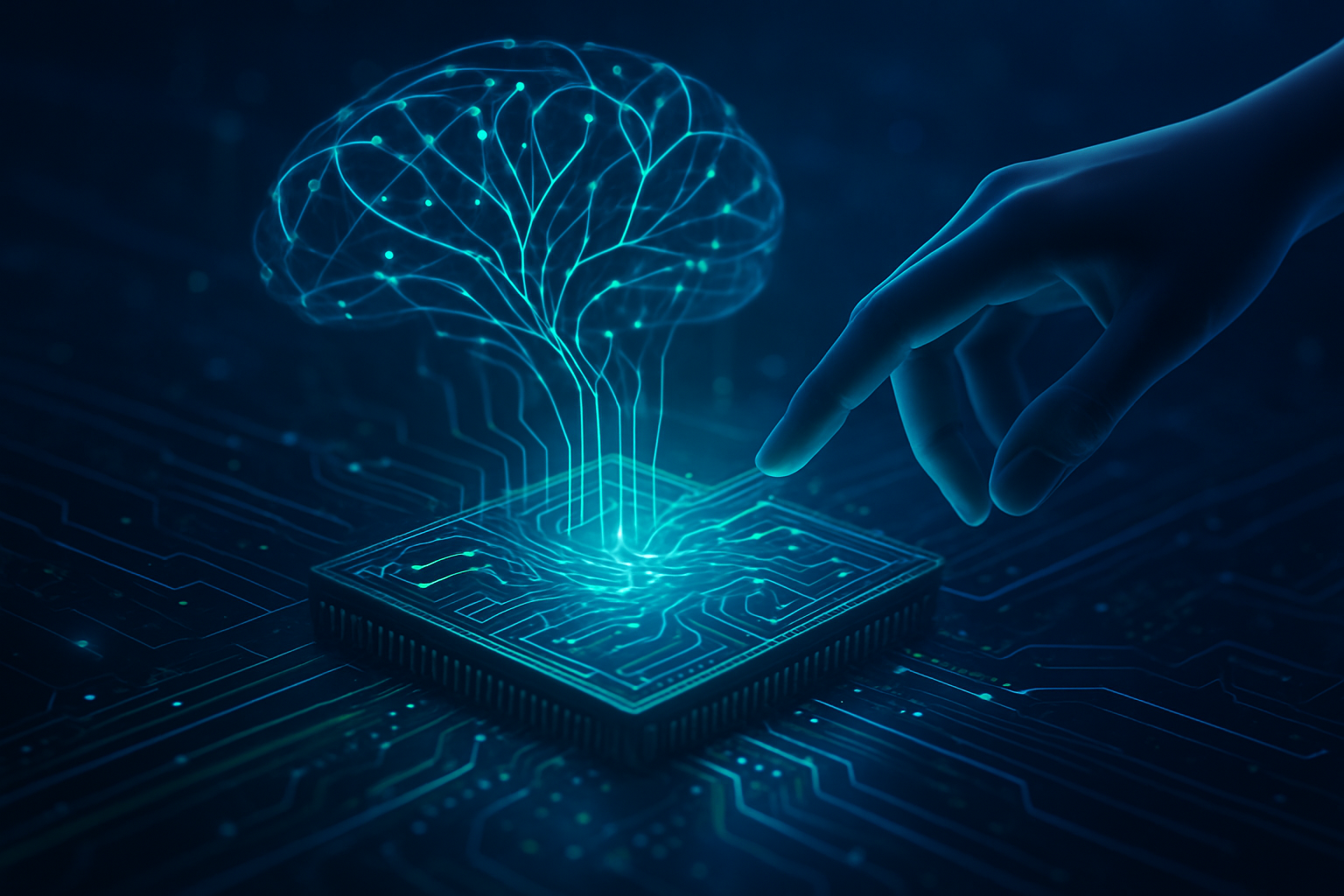San Francisco, CA – December 2, 2025 – In a move set to redefine the landscape of artificial intelligence and semiconductor innovation, Ricursive Intelligence today announced the official launch of its Frontier AI Lab. With a substantial $35 million in seed funding, the nascent company is embarking on an ambitious mission: to transform semiconductor design through advanced AI and accelerate humanity's path toward artificial superintelligence (ASI). This launch marks a significant step in the convergence of AI and hardware, promising to unlock unprecedented capabilities in future AI chips.
The new lab is poised to tackle the complex challenges of modern chip architecture, leveraging a novel approach centered on "recursive intelligence." This paradigm envisions AI systems that continuously learn, adapt, and self-optimize by applying their own rules and procedures, leading to a dynamic and evolving design process for the next generation of computing hardware. The implications for both the efficiency of AI development and the power of future intelligent systems are profound, signaling a potential paradigm shift in how we conceive and build advanced AI.
The Dawn of Recursive Chip Design: A Technical Deep Dive
Ricursive Intelligence's core technical innovation lies in applying the principles of recursive intelligence directly to the intricate domain of semiconductor design. Unlike traditional Electronic Design Automation (EDA) tools that rely on predefined algorithms and human-guided iterations, Ricursive's AI systems are designed to autonomously refine chip architectures, optimize layouts, and identify efficiencies through a continuous feedback loop. This self-improving process aims to deconstruct complex design problems into manageable sub-problems, enhancing efficiency and innovation over time. The goal is to move beyond static AI models to adaptive, real-time AI learning that can dynamically evolve and self-optimize, ultimately targeting advanced nodes like 2nm technology for significant gains in power efficiency and performance.
This approach dramatically differs from previous methodologies by embedding intelligence directly into the design process itself, allowing the AI to learn from its own design outcomes and iteratively improve. While generative AI tools and machine learning algorithms are already being explored in semiconductor design to automate tasks and optimize certain parameters, Ricursive's recursive intelligence takes this a step further by enabling self-referential improvement and autonomous adaptation. This could lead to a significant reduction in design cycles, lower costs, and the creation of more powerful and specialized AI accelerators tailored for future superintelligence.
Initial reactions from the broader AI research community, while not yet specific to Ricursive Intelligence, highlight both excitement and caution. Experts generally recognize the immense potential of frontier AI labs and recursive AI in accelerating capabilities and potentially ushering in superhuman machines. The ability of AI to continuously grow, adapt, and innovate, developing a form of "synthetic intuition," is seen as transformative. However, alongside the enthusiasm, there are significant discussions about the critical need for robust governance, ethical frameworks, and safety measures, especially as AI systems gain the ability to rewrite their own rules and mental models. The concern about "safetywashing"—where alignment efforts might inadvertently advance capabilities without fully addressing long-term risks—remains a prevalent topic.
Reshaping the AI and Tech Landscape
The launch of Ricursive Intelligence's Frontier AI Lab carries significant implications for AI companies, tech giants, and startups alike. Companies heavily invested in AI hardware, such as NVIDIA (NASDAQ: NVDA), Intel (NASDAQ: INTC), and AMD (NASDAQ: AMD), stand to both benefit and face new competitive pressures. If Ricursive Intelligence successfully develops more efficient and powerful AI-designed chips, it could either become a crucial partner for these companies, providing advanced design methodologies, or emerge as a formidable competitor in specialized AI chip development. Tech giants like Google (NASDAQ: GOOGL), Microsoft (NASDAQ: MSFT), and Amazon (NASDAQ: AMZN), all with substantial AI research and cloud infrastructure divisions, could leverage such advancements to enhance their own AI models and services, potentially gaining significant competitive advantages in performance and cost-efficiency for their data centers and edge devices.
For major AI labs, including those within these tech giants and independent entities like OpenAI and Anthropic, Ricursive Intelligence's work could accelerate their own AI development, particularly in training larger, more complex models that require cutting-edge hardware. The potential disruption to existing products and services could be substantial if AI-designed chips offer a significant leap in performance-per-watt or cost-effectiveness. This could force established players to rapidly adopt new design paradigms or risk falling behind. Startups focusing on niche AI hardware or specialized AI applications might find new opportunities through access to more advanced, AI-optimized silicon, or face increased barriers to entry if the cost of developing such sophisticated chips becomes prohibitive without recursive AI assistance. Ricursive Intelligence's early market positioning, backed by a significant seed round from Sequoia, places it as a key player to watch in the evolving AI hardware race.
Wider Significance and the Path to ASI
Ricursive Intelligence's endeavor fits squarely into the broader AI landscape as a critical step in the ongoing quest for more capable and autonomous AI systems. It represents a tangible effort to bridge the gap between theoretical AI advancements and the physical hardware required to realize them, pushing the boundaries of what's possible in computational power. This development aligns with the trend of "AI for AI," where AI itself is used to accelerate the research and development of more advanced AI.
The impacts could be far-reaching, extending beyond just faster chips. More efficient AI-designed semiconductors could reduce the energy footprint of large AI models, addressing a growing environmental concern. Furthermore, the acceleration toward artificial superintelligence, while a long-term goal, raises significant societal questions about control, ethics, and the future of work. Potential concerns, as echoed by the broader AI community, include the challenges of ensuring alignment with human values, preventing unintended consequences from self-improving systems, and managing the economic and social disruptions that ASI could bring. This milestone evokes comparisons to previous AI breakthroughs like the development of deep learning or the advent of large language models, but with the added dimension of AI designing its own foundational hardware, it suggests a new level of autonomy and potential for exponential growth.
The Road Ahead: Future Developments and Challenges
In the near term, experts predict that Ricursive Intelligence will focus on demonstrating the tangible benefits of recursive AI in specific semiconductor design tasks, such as optimizing particular chip components or accelerating verification processes. The immediate challenge will be to translate the theoretical advantages of recursive intelligence into demonstrable improvements over conventional EDA tools, particularly in terms of design speed, efficiency, and the ultimate performance of the resulting silicon. We can expect to see early prototypes and proof-of-concept chips that showcase the AI's ability to innovate in chip architecture.
Longer term, the potential applications are vast. Recursive AI could lead to the development of highly specialized AI accelerators perfectly tuned for specific tasks, enabling breakthroughs in fields like drug discovery, climate modeling, and personalized medicine. The ultimate goal of accelerating artificial superintelligence suggests a future where AI systems can design hardware so advanced that it facilitates their own further development, creating a virtuous cycle of intelligence amplification. However, significant challenges remain, including the computational cost of training and running recursive AI systems, the need for massive datasets for design optimization, and the crucial task of ensuring the safety and alignment of increasingly autonomous design processes. Experts predict a future where AI-driven design becomes the norm, but the journey will require careful navigation of technical hurdles and profound ethical considerations.
A New Epoch in AI Development
The launch of Ricursive Intelligence's Frontier AI Lab marks a pivotal moment in AI history, signaling a concerted effort to merge the frontier of artificial intelligence with the foundational technology of semiconductors. The key takeaway is the introduction of "recursive intelligence" as a methodology not just for AI development, but for the very creation of the hardware that powers it. This development's significance lies in its potential to dramatically shorten the cycle of innovation for AI chips, potentially leading to an unprecedented acceleration in AI capabilities.
As we assess this development, it's clear that Ricursive Intelligence is positioning itself at the nexus of two critical technological frontiers. The long-term impact could be transformative, fundamentally altering how we design, build, and interact with AI systems. The pursuit of artificial superintelligence, underpinned by self-improving hardware design, raises both immense promise and significant questions for humanity. In the coming weeks and months, the tech world will be closely watching for further technical details, early benchmarks, and the initial strategic partnerships that Ricursive Intelligence forms, as these will provide crucial insights into the trajectory and potential impact of this ambitious new venture.
This content is intended for informational purposes only and represents analysis of current AI developments.
TokenRing AI delivers enterprise-grade solutions for multi-agent AI workflow orchestration, AI-powered development tools, and seamless remote collaboration platforms.
For more information, visit https://www.tokenring.ai/.









